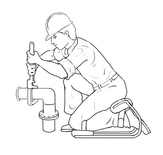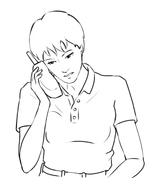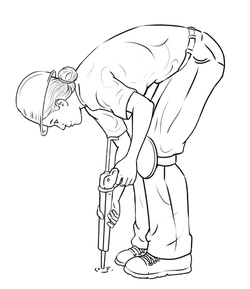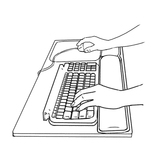|
Ergonomics is about fitting the task to the person, and fitting the person to the task. When ergonomic principles are applied in a work environment, many workplace injuries are avoided and work performance can be improved. To have "good ergonomics", ergonomic risk factors with the task and the individual must be identified and eliminated or reduced. THE TASK
 Contact stress: Contact stress occurs when there is pressure exerted on a body part, for example, when kneeling on the floor for an extended period there is contact stress on the knees. Contact stress can cause irritation to the body, particularly when combined with awkward postures.
Reducing your ergonomic risk associated with a TASK:
THE INDIVIDUAL Some common ergonomic risk factors associated with the individual include:
Reducing your ergonomic risk associated with an INDIVIDUAL:
Maintaining physical health and good posture is essential for preventing injury. A Functional Abilities Evaluation (FAE) can assess an individual's fitness to perform tasks associated with a job. How Staszak Physical Therapy & Wellness Center can help: At Staszak Physical Therapy & Wellness Center, we can help reduce your ergonomic risk factors by analyzing the postures and movements that you use during your work activities, as well as analyzing your body and it's ability to perform the tasks. Physical Therapists can conduct a Functional Abilities Evaluation (FAE) to assess your physical ability to meet the demands of your job. We may identify risks within your job such as awkward postures and make suggestions for improvement. We may discuss your typical work day with you and provide guidance for avoiding injury or to assist in the recovery of an existing injury. We may suggest you plan your work day to break up prolonged positions with other tasks. We may design a program of stretches that you can do at your workplace to reduce muscle tension created by work activities. Contact us today for your appointment!
1 Comment
Your comment will be posted after it is approved.
Leave a Reply. |
Our BlogRead here for more information about our practice, industry news, tips for taking care of your body, and great recipes for healthy living. Categories
All
|






 RSS Feed
RSS Feed